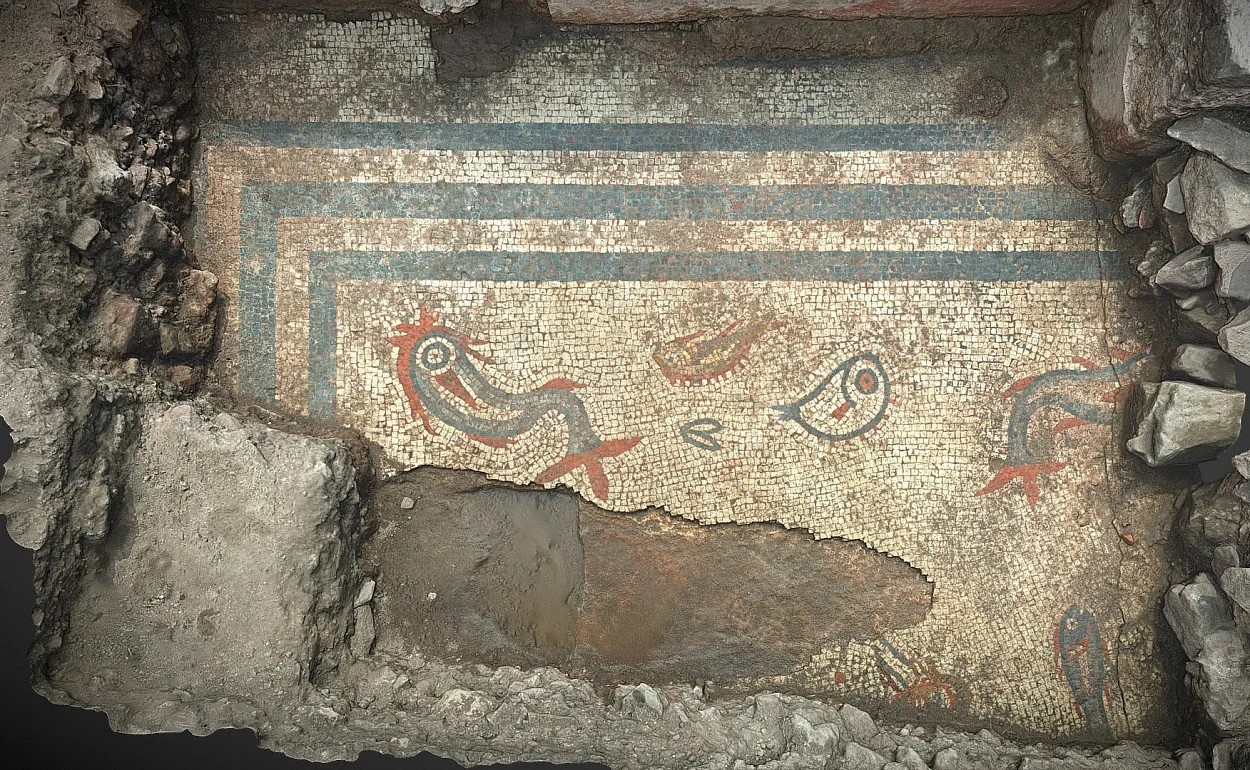Archaeologists have uncovered an aquatic themed mosaic during excavations at Wroxeter Roman City.
Wroxeter Roman City, originally known as Viroconium during Roman times, is situated in the village of Wroxeter in Shropshire, England.
Viroconium was initially established as a frontier post during the 1st century AD for Thracian Auxilia during the campaigns led by Publius Ostorius Scapula, a general and governor of the province of Britannia.
The location was strategically chosen to protect the River Severn valley from Cambria (Wales), and because of its proximity to Watling Street, a major Roman highway.
Viroconium would grow into the 4th-largest settlement in Roman Britain, with a population of more than 15,000 inhabitants, and covering an area of 173 acres. The city included many public buildings, such as thermae, temples, shops, a basilica, and a colonnaded forum.
In a recent excavation conducted by English Heritage Trust, the University of Birmingham, Vianova Archaeology & Heritage Services, and Albion Archaeology, archaeologists have uncovered the remains of a large civic building, a shrine, and a well-preserved mosaic.
The civic building would have been situated along the city’s main road, measuring 8 metres in width by at least 40 metres long. Buttresses reinforced the building’s massive rear wall, which could have stood to several storeys tall.
The mosaic was discovered in a high-status townhouse dating back to the 2nd century AD. Remarkably, some of the lower sections of the townhouse walls have survived intact, still bearing the original painted plaster.
According to a press statement by English Heritage: “The mosaic depicts strikingly colourful dolphins and fish. Its style dates to the 2nd century, soon after the city was established to replace a legionary fortress.”
Header Image Credit : English Heritage
Sources : English Heritage





